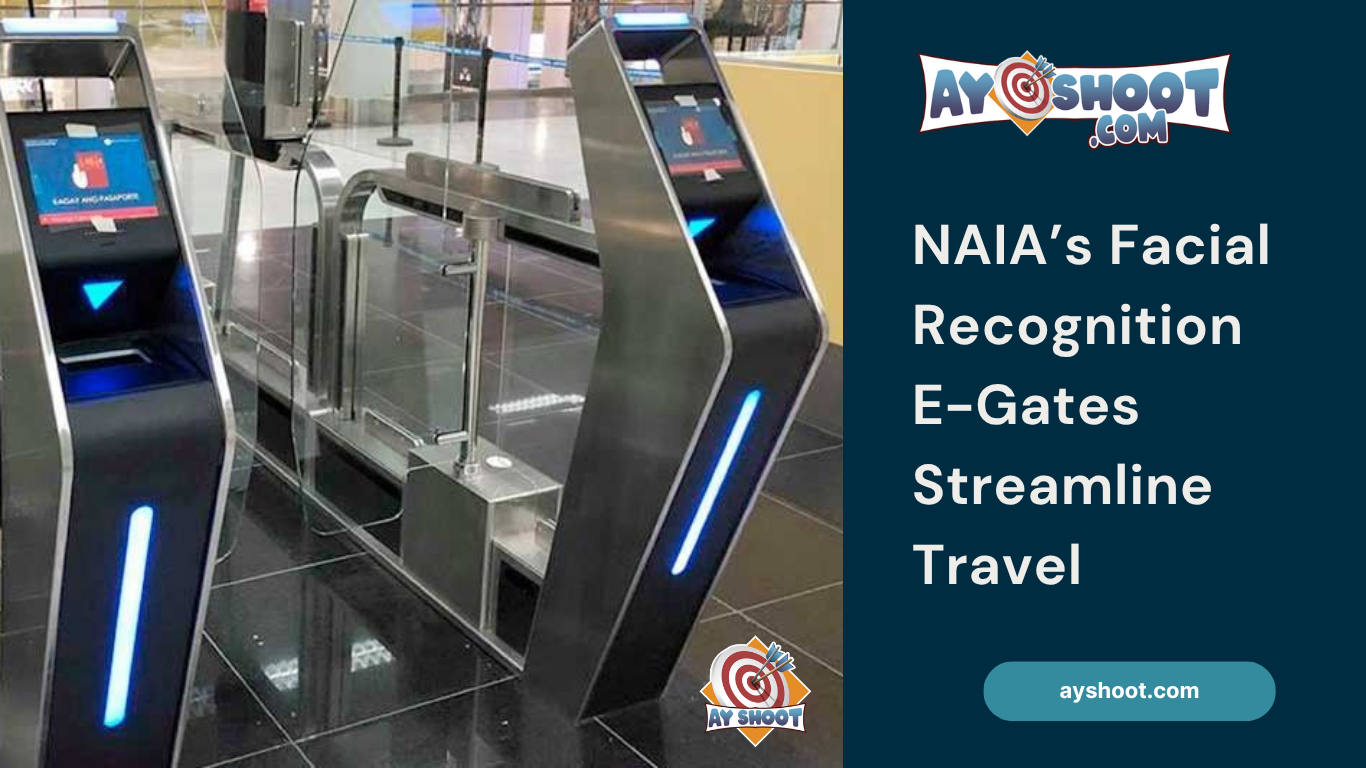The Ninoy Aquino International Airport (NAIA) is set to revolutionize passenger processing by rolling out a facial recognition system within the next six months. This initiative aims to significantly reduce wait times at immigration checkpoints by allowing travelers to pass through using only their facial biometric data, eliminating the need to present passports or other identification cards.
During a visit to NAIA Terminal 3 on June 3, President Ferdinand R. Marcos Jr. highlighted the benefits of this upgrade, stating that the new technology “makes life easier for passengers, ensuring a smoother, faster experience without the constant need to show IDs.” He reiterated that the system would be implemented at no cost to the Philippine government, thanks to the Public-Private Partnership (PPP) model led by the New NAIA Infrastructure Corporation (NNIC).
Ramon Ang, Chairman of NNIC, confirmed that the facial recognition e-gates are expected to be operational before the end of the year. “We anticipate installing these biometric gates within six months,” Ang said, noting that the technology would help alleviate long queues and improve overall airport efficiency.
Once fully implemented, NAIA’s facial recognition system will not only streamline the immigration process but will also enhance security. The e-gates will scan passengers’ faces and match them against government records, ensuring a secure and reliable method for identity verification. By reducing reliance on manual document checks, the airport expects to minimize human error and potential security gaps.
In addition to fast-tracking passenger processing, the modernization project includes other technological upgrades designed to improve the travel experience. NAIA will introduce self-check-in and bag drop kiosks, allowing travelers to handle check-in procedures independently. Flight information display systems will also be upgraded to provide real-time updates, reducing uncertainty and frustration among passengers.
Under the PPP model, NNIC has partnered with global technology companies, including Collins Aerospace, to integrate advanced systems throughout the airport. Beyond biometric gates, plans also involve relocating hired vehicles and taxis underground to ease congestion on airport roads. A new Airport Operational Database and Resource Management System will enable staff to manage flights and resources more efficiently, while a Baggage Reconciliation System will improve luggage tracking, significantly lowering the incidence of lost or mishandled bags.
NAIA currently handles over 30 million passengers annually across its terminals. The addition of facial recognition technology aligns with plans to expand capacity, particularly with the upcoming NAIA Terminal 5 slated to open in 2026. When combined with Terminal 2, the new terminal will boost annual capacity to approximately 35 million passengers. “These upgrades, including biometric processing, are crucial as we prepare for increased passenger volumes,” Ang added.
President Marcos has been vocal about his administration’s commitment to modernizing public infrastructure, emphasizing that such improvements directly benefit Overseas Filipino Workers (OFWs) and frequent travelers. “We want to make sure our OFWs have a hassle-free journey home, especially during peak seasons,” he said. The facial recognition system, he noted, will particularly aid OFWs by ensuring they spend less time in transit and more time with their families.
Security officials also see facial recognition as a tool to bolster national security. With an automated system in place, it becomes more difficult for unauthorized individuals to bypass immigration controls. The integration of biometric data with existing watchlists and no-fly lists aims to provide authorities with real-time alerts regarding potential security threats.
Critics of biometric systems have raised concerns about privacy and data protection. In response, NAIA administrators have assured the public that all collected data will be encrypted and stored in compliance with the Data Privacy Act. Regular audits will be conducted to ensure the system adheres to strict cybersecurity protocols, preventing unauthorized access or misuse of personal information.
Airlines operating at NAIA have welcomed the upgrade, anticipating smoother passenger flows and reduced flight delays. With faster immigration processing, airlines expect a decrease in missed connections and more accurate departure times. Industry insiders also predict that improved airport efficiency could make Manila a more competitive hub in Southeast Asia, attracting additional international routes and stimulating economic growth.
Travelers planning to fly out of NAIA in the coming months are encouraged to register their biometric information ahead of time. Airport officials have set up registration booths at key terminals, where passengers can enroll by presenting their passports and undergoing a simple facial scan. This pre-registration process will ensure a seamless transition once the e-gates become operational.
The rollout of facial recognition technology at NAIA represents a significant milestone in the Philippines’ efforts to modernize its transportation infrastructure. By leveraging cutting-edge biometric solutions, the airport aims to offer a world-class experience that balances speed, convenience, and security. As the six-month deadline approaches, passengers and industry stakeholders alike eagerly await the moment when the new system goes live, marking a new era in Philippine air travel





